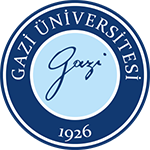ABSTRACT
conclusion:
Perivenous artifacts cause obscuration of adjacent great vessels. Lower extremity injection prevents perivenous artifacts and good lesion de-piction is achieved.
results:
Artifacts were observed in all but one patient in group 1. Artifacts were intense in 17 patients (68%). The mean artifact score was 1.52. Among the evaluated vessel segments, the most prominent image degrading effects of artifacts were observed in the ascending aorta and right pulmonary artery. The lower extremity injection totally eliminated the perivenous artifact. This method resulted in statistically significantly lower attenuation numbers in vessels compared to upper extremity injection (p < 0.05), but adequate con-trast enhancement was achieved
Materials and Methods:
Fifty patients with suspected pulmonary thrombo-embolism (PE) or aortic dissection were included in this study. Contrast ma-terial was administered via an upper extremity vein in 25 patients (group 1) and via a lower extremity vein in 25 patients (group 2) with a power injector. CT angiography was performed with bolus tracking. Contrast attenuation of vessel segments was calculated. Images were analyzed for artifacts and inter-pretability by using a four-level scaling method (1: intense and 4: no artifact).
Purpose:
Perivenous artifacts in the vena cava superior may cause obscura-tion of adjacent great vessels in thoracic computed tomography (CT) angiog-raphy. Our goal was to determine the image degrading effects of perivenous artifacts and determine the effectiveness of lower extremity injection as an alternative contrast delivery method



